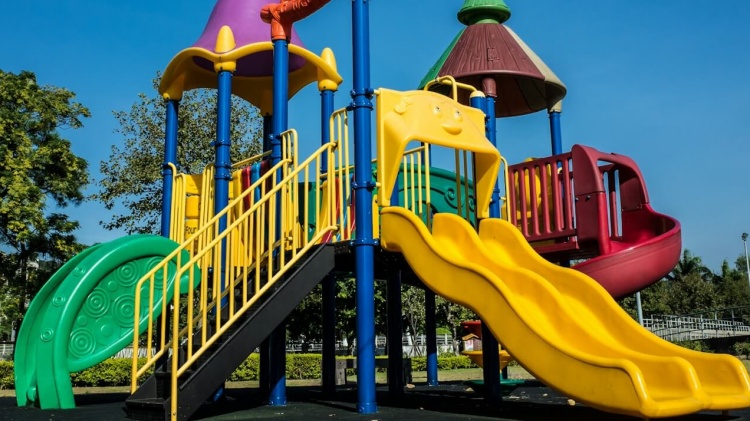10 Innovative Indoor Slide Designs for Your Home or Office
Adding a slide to your home or office is a fun and unique way to spice up your interior design. Indoor slides are great for

Installing an indoor slide in your home or office is an exciting and unique way to add some fun while connecting different floors or rooms. With the right materials, indoor slides can provide years of enjoyment as well as visual flair to your interior design.
When selecting materials for an indoor slide, the two most important criteria are safety and durability. You want to choose materials that will hold up well over time while providing a smooth, protected ride for sliders of all ages.
In this expanded guide, we’ll do a deep dive into the best options for safe, long-lasting slide materials to bring thrills to your indoor spaces. We’ll compare the pros and cons of various wood, plastic, metal, and specialty slide materials while offering design tips and safety recommendations. Let’s get started!
Plastic is one of the most popular and versatile options for indoor slide construction. Plastic slides provide a super-slick, fast-riding surface. They come in a range of styles and colors to match any décor. Here are some of the best types of plastic for indoor slides:
Fiberglass-reinforced plastic is a composite blending of fiberglass fibers with polyester resin. The addition of fiberglass strands makes the plastic incredibly hard and high-strength. FRP plastic won’t bend, warp or crack nearly as easily as standard plastics.
The resin creates a glossy, impermeable surface that’s easy to clean and won’t absorb dirt or stains. FRP plastic is also highly weather-resistant and won’t fade or deteriorate from UV light exposure. This makes it suitable for outdoor installations as well.
With properties similar to industrial plastics, fiberglass-reinforced plastic is the Cadillac of slide materials. While pricier than standard plastics, FRP offers unmatched longevity and a crystal-clear glass-like appearance.
Acrylic plastic provides excellent optical clarity and light transmission for see-through slides. Compared to traditional plastics, acrylic is more flexible, making it easier to mold into unique, curved shapes. The flexibility also offers impact protection that reduces cracking.
Backlighting acrylic slides creates vivid colored transparencies that amplify lighting effects. Programmable LEDs allow adjustable colored lighting to set custom moods. Embedded fiber-optic strands take things to the next level.
While costlier than materials like polyethylene, acrylic’s clarity, durability, and flexibility make it ideal for high-end custom indoor slides. Proper polishing removes seam lines and creates mirror-smooth surfaces.
Polyethylene is a lightweight, flexible plastic, perfect for kids’ indoor slides. It allows tight bending radiuses to create fun coiling tube slides in vivid colors. Polyethylene’s smoothness and rounded edges help prevent injuries for smaller sliders.
Polyethylene comes in both solid and foamed versions. Foamed polyethylene provides cushioning for added safety. This is the most affordable plastic option, making it popular for residential kids’ slides. The lightweight flexibility of polyethylene also aids in DIY installation.
While not as strong as advanced plastics, polyethylene works well for gentle slopes under 45 degrees. It can be combined with aluminum or steel side rails for containment. Polyethylene provides safety, thrills, and color at a reasonable price.
Polycarbonate plastic is known for its extreme strength and impact resistance. It provides up to 200 times the impact protection of standard plastics. Polycarbonate also offers superb weathering and UV-light resistance.
The material is very transparent, providing sleek, see-through slides that won’t deteriorate or discolor over years of sunlight exposure. Polycarbonate also withstands heavy use without showing scratches due to its hardness.
This makes polycarbonate an exceptional plastic for indoor/outdoor hybrid slides. The unparalleled toughness provides safety while maintaining crystal clear allure. Like acrylic, embedding lighting creates spectacular effects. Proper installation is key to maximizing durability.
For a cozy, natural style, wood is a wonderful slide material. Different wood types have varying densities, grains, and finishes to suit any indoor space. Here are the top wood choices for indoor slides:
Maple is one of the hardest, densest hardwoods available. This makes it incredibly durable and resistant to scratches, gouges, and dings. Maple has a fine, smooth grain that results in an ultra-fast slide surface without speed-inhibiting friction.
Maple also takes stains well, allowing customization to match existing wood tones in a space. For a contemporary style, maple can be left with a clear gloss finish to showcase its blonde tones. Its hardness does cause dents if heavy objects are dropped on it. Overall, maple creates beautiful, durable slides.
Another great hardwood option, birch, provides the durability and stainability of maple at a lower cost. Birch is exceptionally strong for its weight and machines nicely into curved slide shapes. The smooth, closed birch grain pattern results in a splinter-free slide surface.
Birch stains readily to coordinate with interior woodwork. It also takes paint and clear finishes well. This versatility allows for completing a slide in custom colors to suit any décor. Birch offers great value for attractive, long-lasting wood slides.
Known for its pronounced wood grain patterns and strength, oak creates beautiful, rustic indoor slides. The coarse texture provides more slide friction than maple or birch. Red oak is softer, while white oak has an ultra-tight grain that maximizes slide speed.
The natural oils in oak make it highly resistant to wear and weathering. However, the pronounced pores can collect dirt if not periodically cleaned out. Annual re-oiling helps maintain oak’s natural luster. Allergies are a minor consideration for oak.
Over time, oak develops a distinguished patina. Oak’s sturdiness makes it ideal for multi-story indoor slides spanning upper floors down to ground levels. For fireman’s pole-style slides, oak is a top choice.
With its signature aromatic scent and soft splintery texture, aromatic cedar creates indoor slides with distinctive character. Cedar contains natural oils that ward off insects and prevent rotting. This makes cedar suitable for outdoor slides with proper weatherproofing.
The soft, porous quality provides more slide friction than hardwoods – a pro for safety but a con for speed demons. Cedar offers the appeal of an outdoor treehouse slide brought creatively indoors. Over time, maintaining smoothness is required as imperfections develop.
Cedar’s natural aesthetic works well for rustic cabins and country-style homes. It also makes excellent, compact kids’ slides for indoor playrooms. With personality and longevity, cedar is a great wood slide material.
For a contemporary industrial look, metal offers sleek simplicity. Metal slides withstand heavy use while requiring minimal maintenance. Here are the top metals for indoor slides:
The ultimate in durability, stainless steel is impervious to corrosion, rust, stains, and elements. The chromium content makes it nearly indestructible. Brushed steel finishes provide an elegant modern look. Or choose from a range of metallic powder coats in any color.
Stainless steel offers unmatched load capacity for multi-story slides spanning floors. Noise is a downside, but adding rubber or felt padding muffles clanging. Stainless is perfect for exposed outdoors to indoor hybrid slides in seaside or winter climates.
Medical-grade stainless steel provides the smoothest, snag-free ride. Options like perforated stair treads reduce weight while maintaining strength. Overall, stainless steel is a premium, long-lasting slide material.
Known for its strength-to-weight ratio, aircraft-grade aluminum allows large yet graceful sliding structures. Anodized and powder coat finishing deters corrosion while adding sleek colorful aesthetics. Recycled aluminum provides eco-friendly sustainability.
Aluminum slides have smooth, silent rides compared to other metals. This makes aluminum popular in home theaters and offices where noise is a concern. Aluminum dents more easily than steel but provides great molding versatility for curved slides. Overall, an exceptional metal choice.
For budget metal slides, galvanized steel offers corrosion resistance and strength. It is regular steel coated in a layer of zinc for protection. Powder coating adds color without chipping or wearing over time.
Galvanized steel comes in preformed, curved panels that bolt together into slides. This allows DIY construction while maintaining safety and a quality appearance. Check for sharp edges that may need sanding or cushioning. With care, galvanized steel makes metal slides affordable.
Beyond classic wood, plastic, and metal, there are specialty materials to create unique indoor slides:
Poured concrete enables the molding of sleek modern slide sculptures. The curving forms evoke contemporary architecture and blend with polished industrial interiors. Concrete stains add bold pops of color.
Maintaining an ultra-smooth, sanded finish is crucial for speed and preventing skin abrasions. Sealants protect concrete from staining. Concrete’s solid mass absorbs noise and vibration. For multimedia rooms, concrete’s sound deadening is a plus.
Concrete slides do require steel reinforcement bars for crack prevention and load-bearing capacity. But concrete offers artistic versatility at a moderate price for distinctive slides.
Using glass panels creates see-through slides and barriers that showcase LED lighting effects. Tempered glass is ultra-strong and shatter-resistant for safety. Frosted or tinted glass maintains privacy while sliding.
Corner rounding and edge polishing ensure the glass doesn’t cut. Careful structural support prevents flexing stress. For art-inspired slides, flowing, melted glass shapes evoke colorful abstract sculptures. The luminous allure of glowing glass makes a stunning design statement.
Mined from steatite minerals, soapstone is naturally smooth and slippery. It has a soft, soapy feel, making it ideal for safe kids’ slides without metal or plastic. Soapstone comes in earthy grey, green and brown shades that add natural zen warmth.
Soapstone doesn’t absorb moisture and is antimicrobial. This prevents odors, mildew and bacterial buildup. The softness also prevents injuries from collisions. Avoid excessive scaling or chipping near high-traffic edges. Soapstone creates ultra-safe kids’ slides with a sculpted look.
Along with picking durable materials built to last, safety is the number one priority for indoor slides. Here are key factors to prevent injuries and create secure, family-friendly slides:
Consulting safety codes and involving experienced slide designers is critical. Performance testing new slides with sandbags ensures safe speeds. Teach children proper slide safety and supervision.
Prioritizing safety will guarantee your indoor slide provides years of accident-free enjoyment. Follow safety best practices and manufacturers’ recommendations during design, construction, and use.
With endless material possibilities for indoor slides, here are key factors to consider when selecting your options:
Analyze all the above criteria early when selecting your slide materials. This ensures it satisfies the functional performance, style and budget needs of your unique indoor space.
Installing your own indoor slide is an exciting do-it-yourself project for homeowners. Here are some top tips for safe and effective DIY slide installation:
Take time to do it right – don’t cut corners. Building permits may be required. Once finished, the home DIY slide will provide an immense sense of personal pride and satisfaction.
Need inspiration for your indoor slide design? Here are some creative ideas to stimulate your imagination:
Let your inner child run wild, dreaming up the most fun, interesting slide designs to enhance your space. Bring friends and family into the planning process to make it a meaningful team project.
The possibilities for indoor slides are limited only by your imagination. They provide convenience while adding character and excitement to any room. With some inspiration and the right materials, you can create a customized slide that becomes a beloved new addition to any home or office.
Boosting moods through thrilling rides, indoor slides are a fun way to add convenience and character to residential and commercial spaces. By selecting durable, safe materials that align with your desired style, you can install a slide that will provide years of enjoyment.
Always make safety the number one priority in slide design and construction. Take advantage of the vast material options available, from cozy wood to gleaming steel. With creativity and care, your new custom indoor slide will become a cherished highlight of your interior space that will provide smiles for years to come.

Adding a slide to your home or office is a fun and unique way to spice up your interior design. Indoor slides are great for
Installing your own indoor slide at home is an exciting DIY project that can add a unique touch of fun to your living space. With

Installing an indoor slide is a fun way to add excitement to any home or office space. However, like any fixture, slides require proper care

Having your own indoor slide is an exciting way to add some fun and convenience to your home. Slides allow for quick transportation between floors,
Adding a slide to your home or office is a fun and unique way to spice up your interior design. Indoor slides are great for
Installing your own indoor slide at home is an exciting DIY project that can add a unique touch of fun to your living space. With

Installing an indoor slide is a fun way to add excitement to any home or office space. However, like any fixture, slides require proper care

Having your own indoor slide is an exciting way to add some fun and convenience to your home. Slides allow for quick transportation between floors,
Copyright © 2024 babyindoorslide. All Rights Reserved.